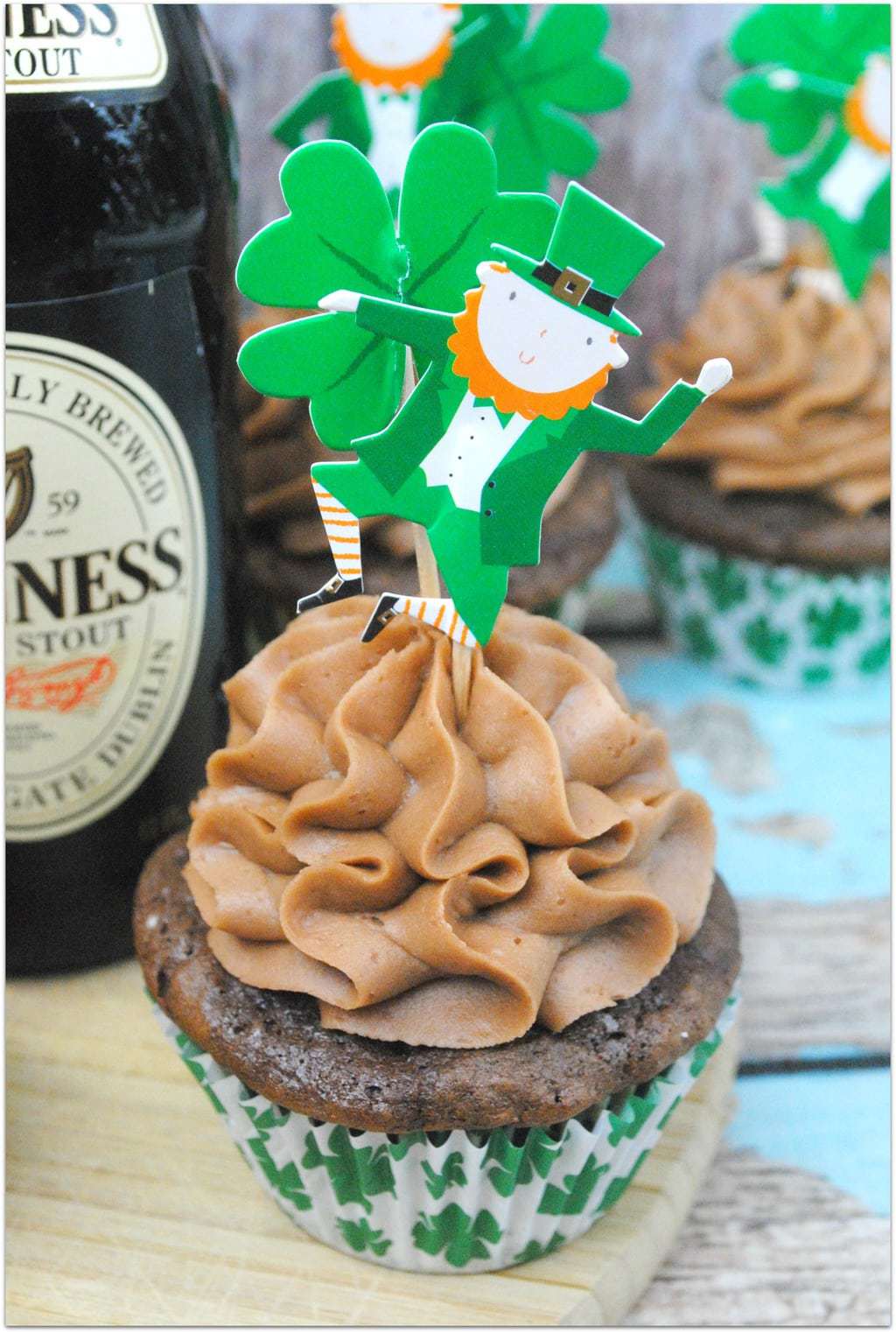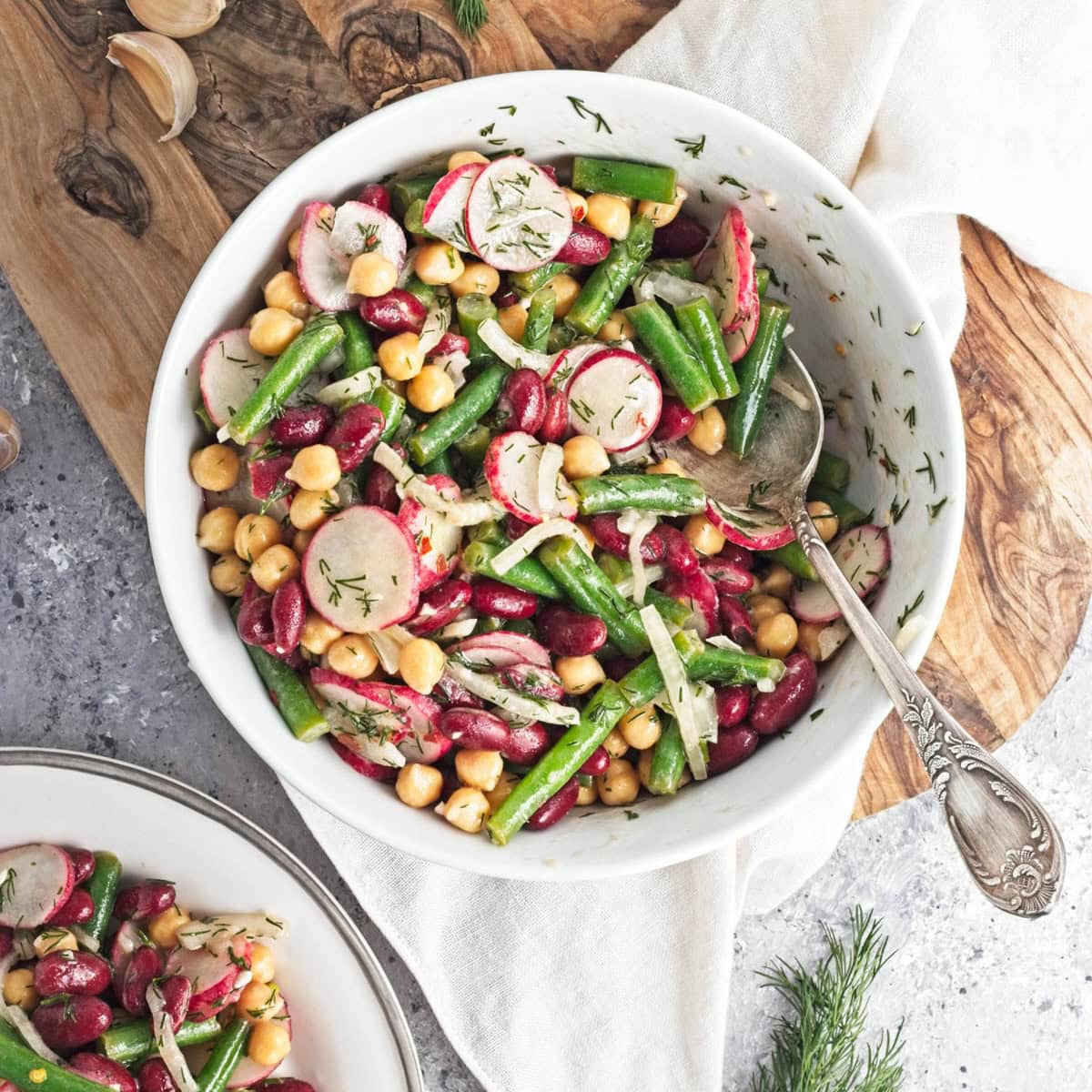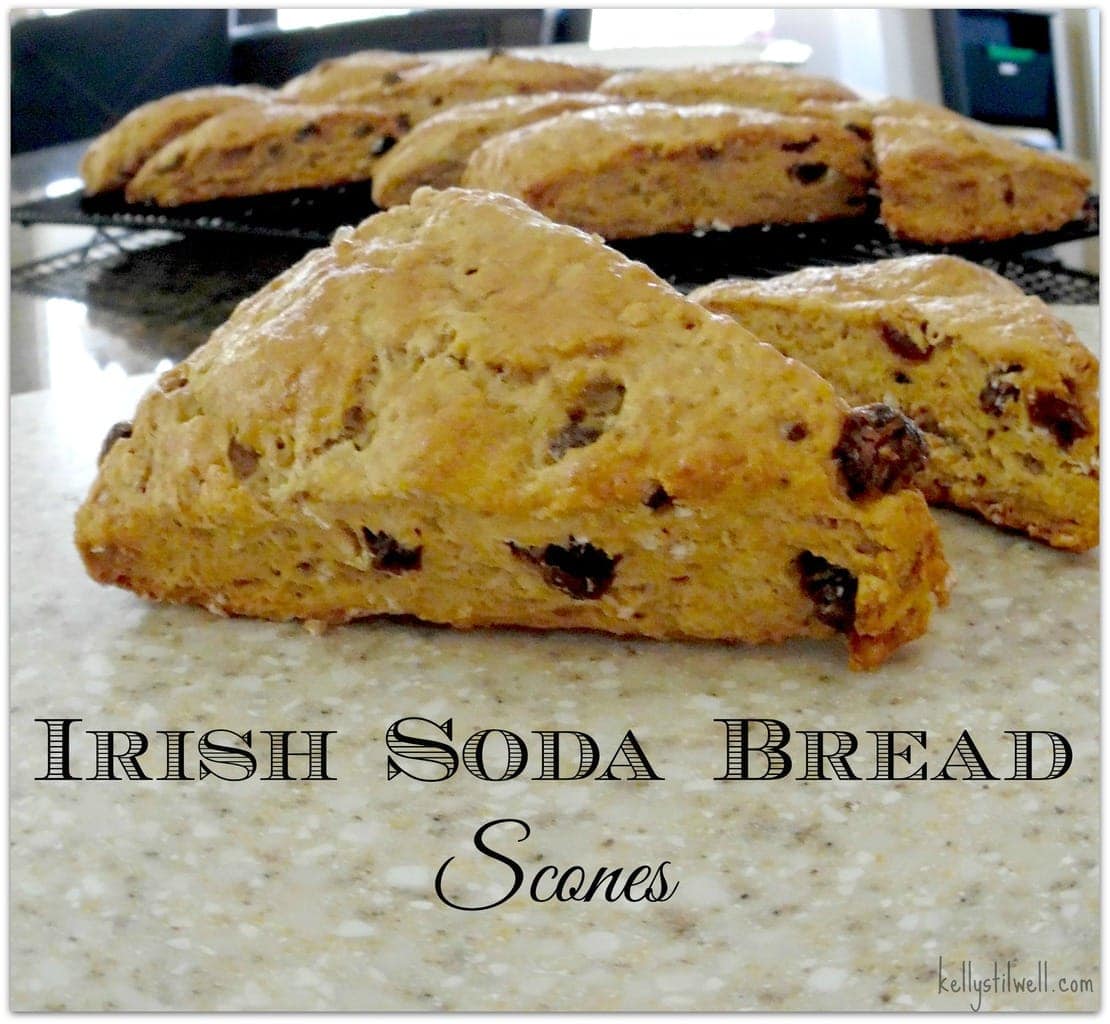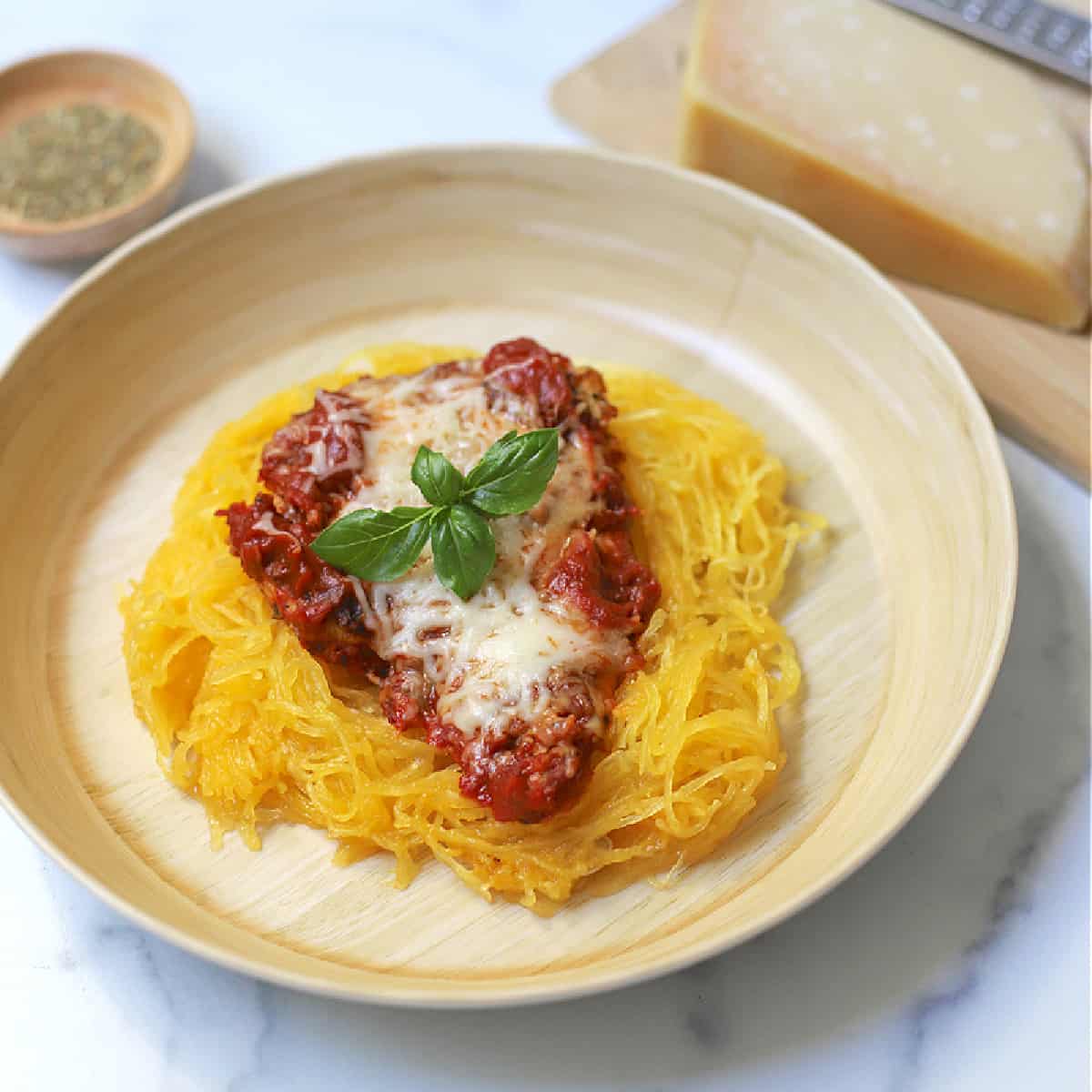How to Cut Cheese for Charcuterie Board
If you’re putting together a cheese board, you’ll want to make sure it’s deliciously paired as well as beautiful.
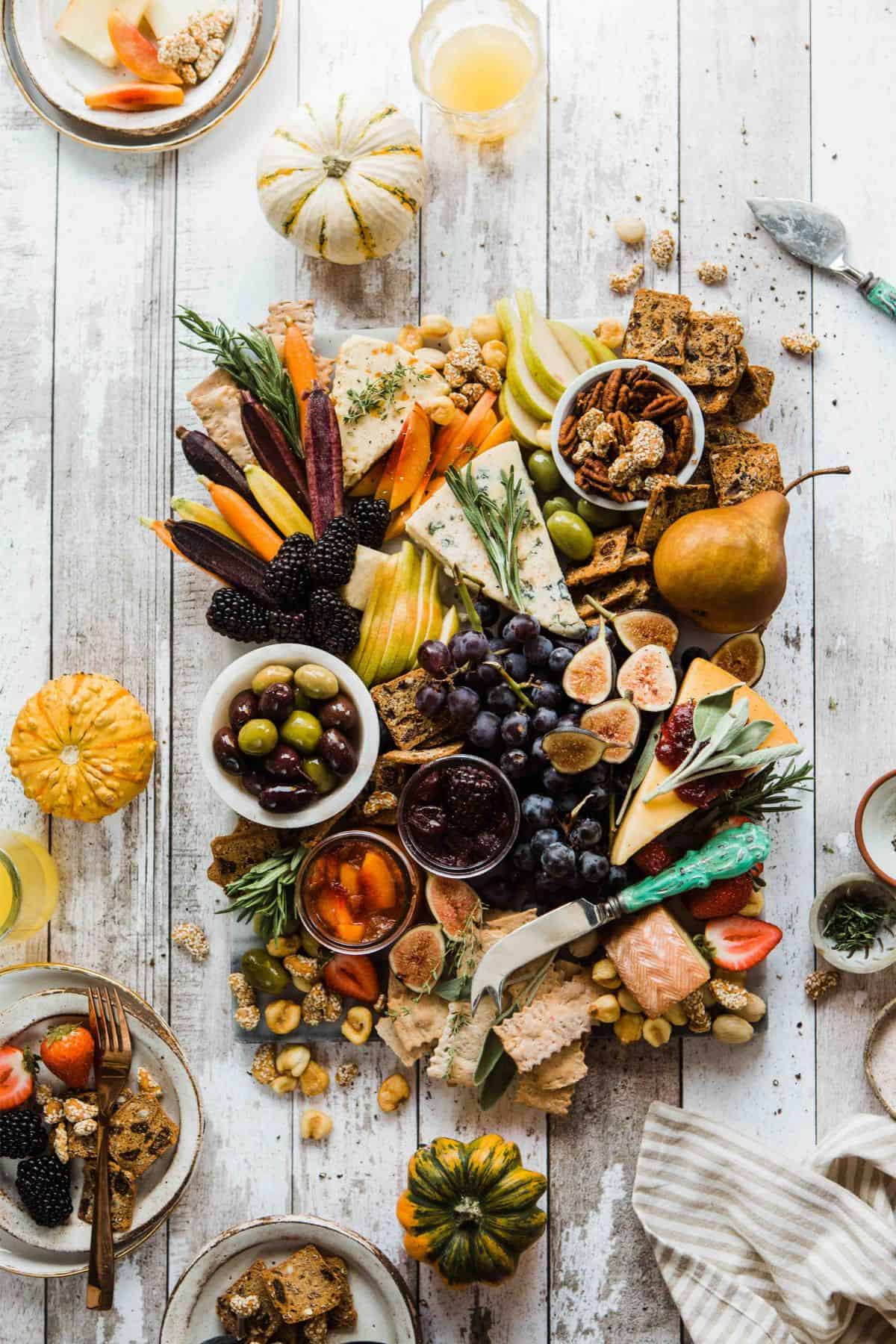
We’ve put together this guide for how to put together a board that everyone raves about! We will get to condiments for your charcuterie board as well as how to put together a simple charcuterie board in a bit.
For now, let’s begin by taking a look at a handful of cheeses I would personally add to my charcuterie board.
If you’re looking to make a specific board with Brie, check out my Brie charcuterie board. I’m betting you’ll love everything on this list of Brie cheese recipes, too.
And for a fun twist, serve all this in a cone! See how to make charcuterie cones for full instructions.
Table of Contents
Best Cheese for Charcuterie
You’ll want to choose a variety of cheeses for your board. Select a mix of soft cheeses, hard cheeses, and semi-hard cheeses to provide a range of flavors and textures.
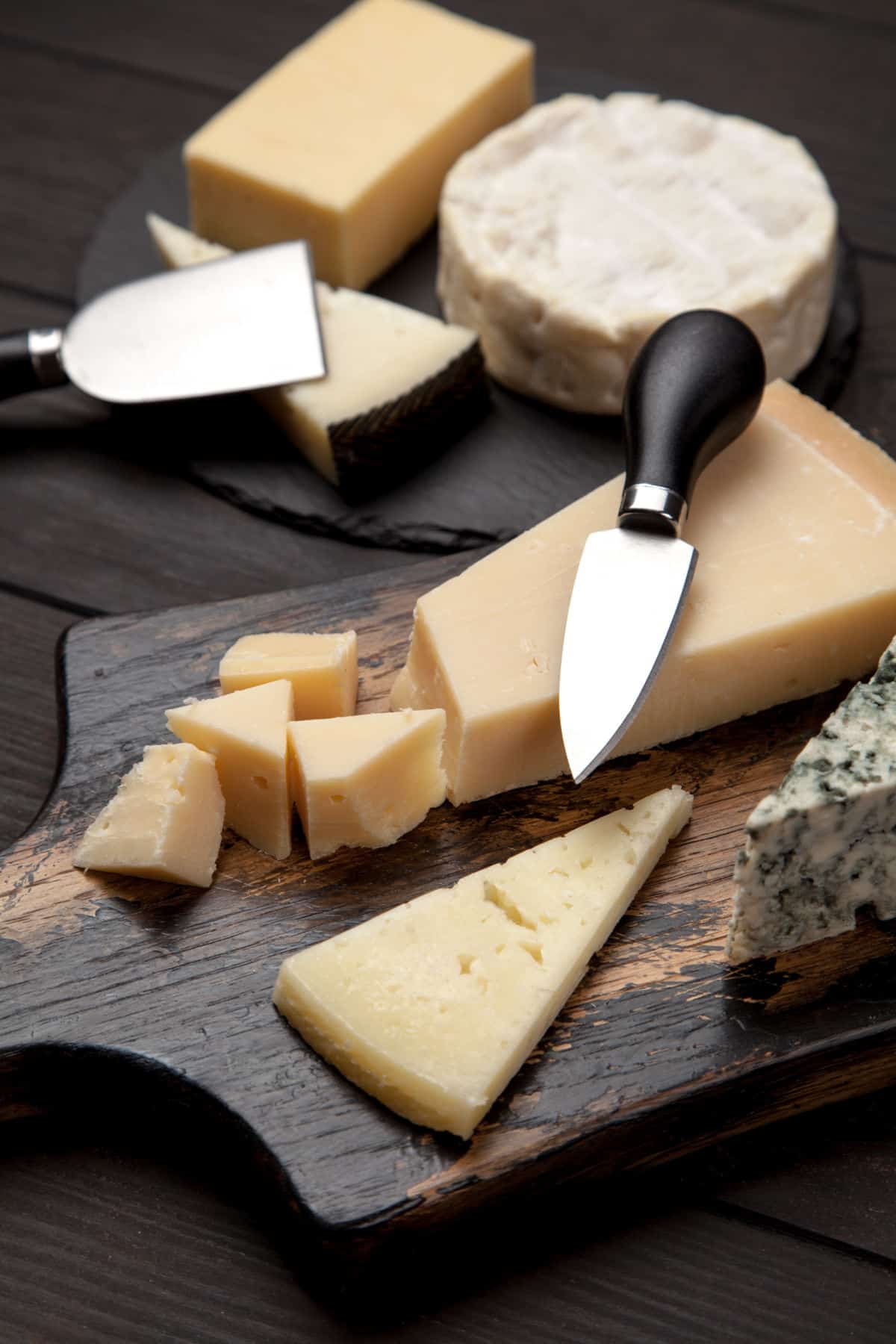
Aim for 3-5 different types of cheese to avoid overwhelming your guests with too many options.
As you’ll see below, most cheeses are best served at or below room temperature.
Take them out of the fridge about 30 minutes before guests are to arrive and it will be perfect by the time you hand them a glass of wine.
Brie
A soft cheese with a bloomy rind, creamy texture, and mild flavor, Brie is a classic choice for a charcuterie board because it’s so versatile.
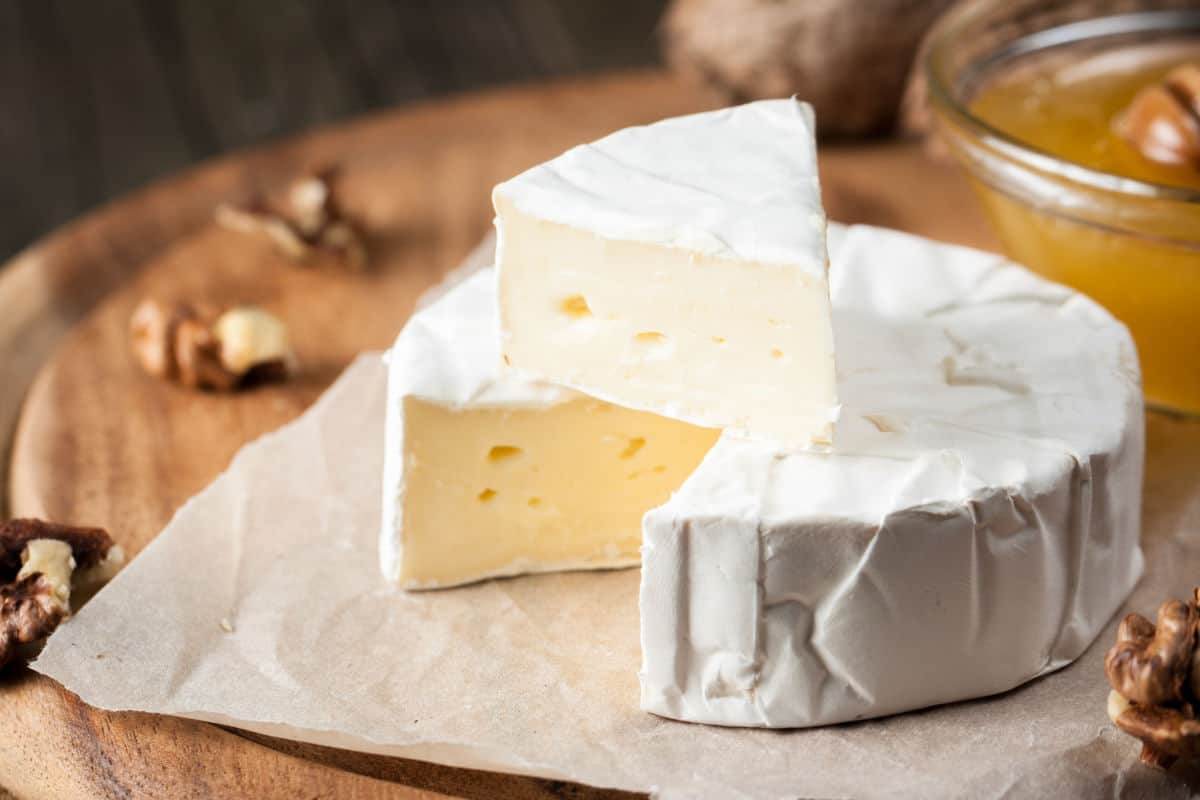
Serve at room temperature (about 68-70°F or 20-21°C) to allow the cheese to soften and the flavors to develop.
You can also serve Brie warmed in the oven, or even wrapped in phyllo dough.
Cheddar
Cheddar adds a nice contrast to milder cheeses on the board because it’s a hard cheese with a sharp, tangy flavor. You’ll be surprised at how many different varieties there are of cheddar, all with distinct flavors.
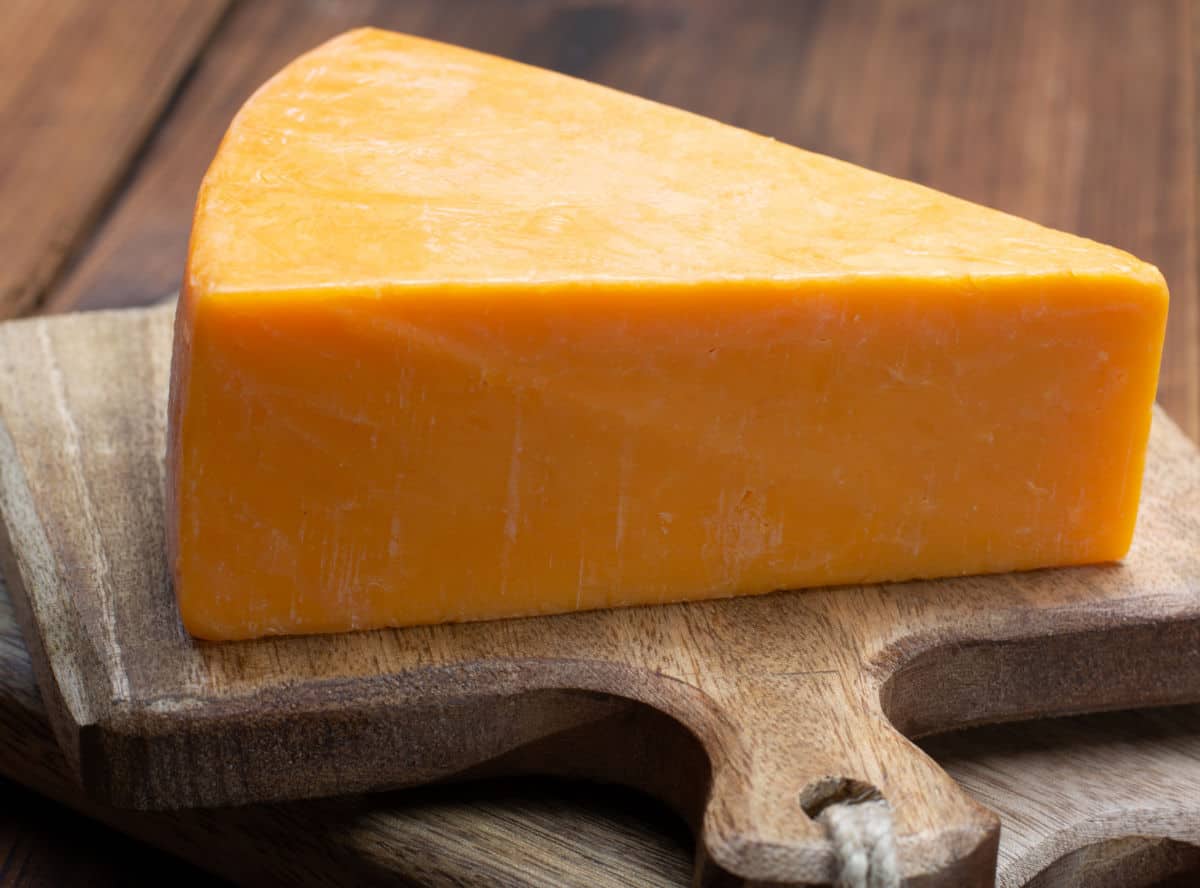
Mild cheddar is considered a young cheese, whereas sharp cheese is aged for nine to twelve months.
We usually buy the extra sharp aged cheddar which has been aged for up to two years. Some cheddars have been aged a lot longer, even ten years or more.
You’ll want to serve cheddar at room temperature (about 68-70°F or 20-21°C) to allow this firm cheese to reach its full flavor potential.
Gouda
A semi-firm cheese with a nutty, buttery flavor, aged Gouda is versatile and pairs well with a variety of meats, fruits, and these homemade crackers.
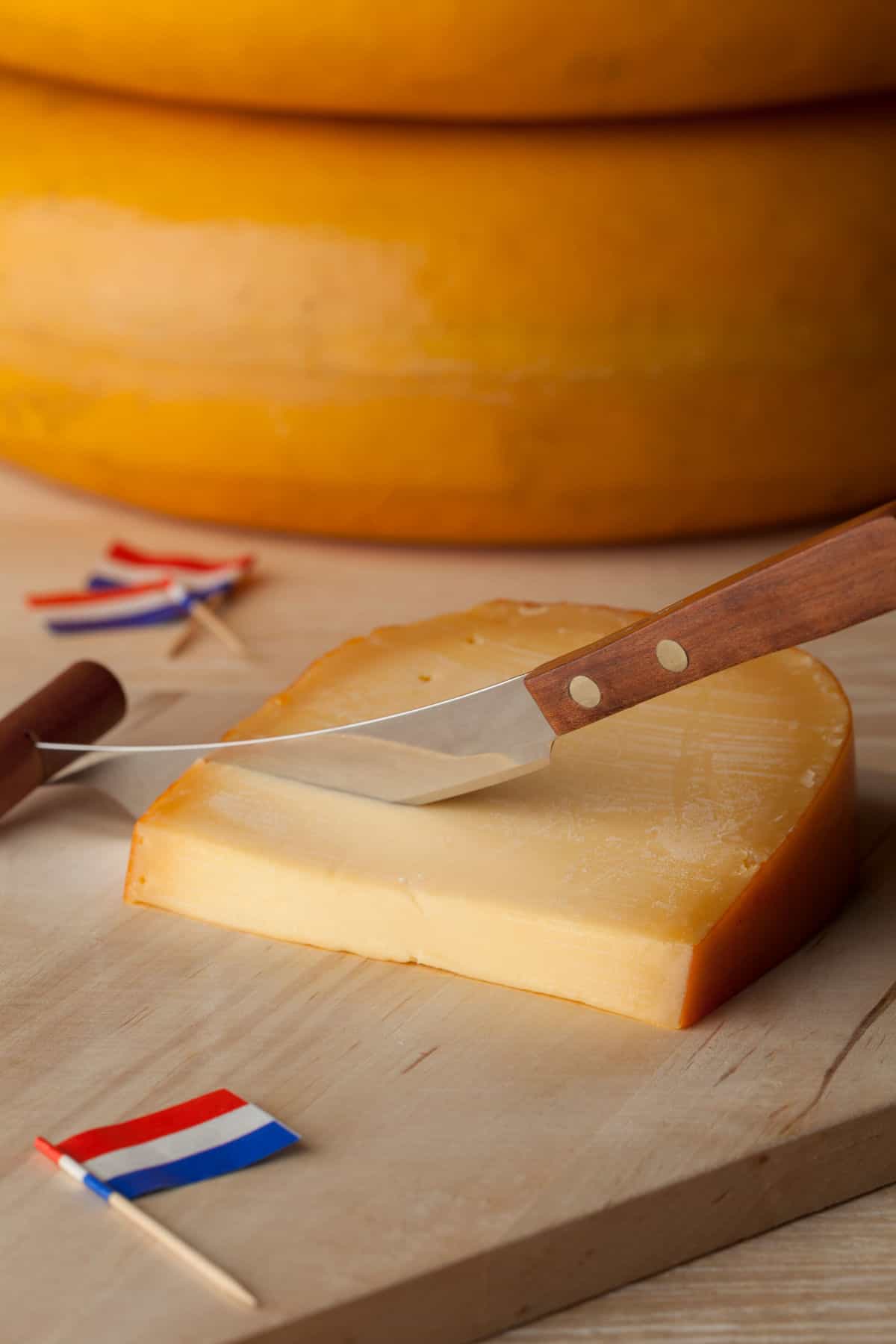
We spent a day in Holland years ago and learned all about Gouda and other cheeses. We were able to bring some back and I wish we’d bought more! It really is our go-to cheese.
Gouda cheese is best served at room temperature, so take it out of the fridge about 30 minutes before serving. This will allow the cheese to soften slightly and enhance its flavor.
Pair Gouda with dried apricots and cherries or slices of fresh apple or pear.
Goat Cheese
A soft cheese with a tangy flavor, goat cheese adds a nice brightness to the board. Pair it with sweeter items like figs and honey.
We typically serve a log of goat cheese along with crackers or baguette slices, but you can certainly get creative with it, too.
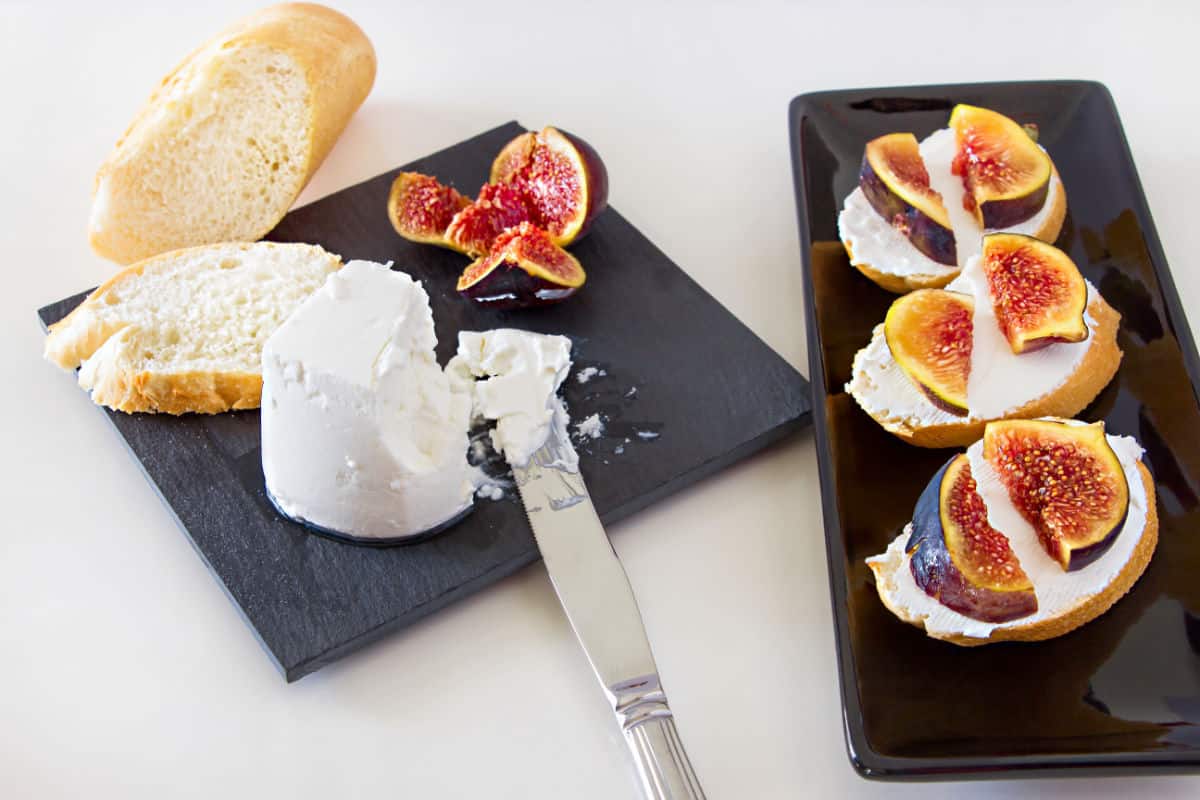
Serve at room temperature (about 68-70°F or 20-21°C) to allow the cheese to soften and the flavors to develop.
Blue Cheese
A strong cheese with a pungent flavor, blue cheese surprisingly pairs well with other bold flavors like cured meats and pickled vegetables.
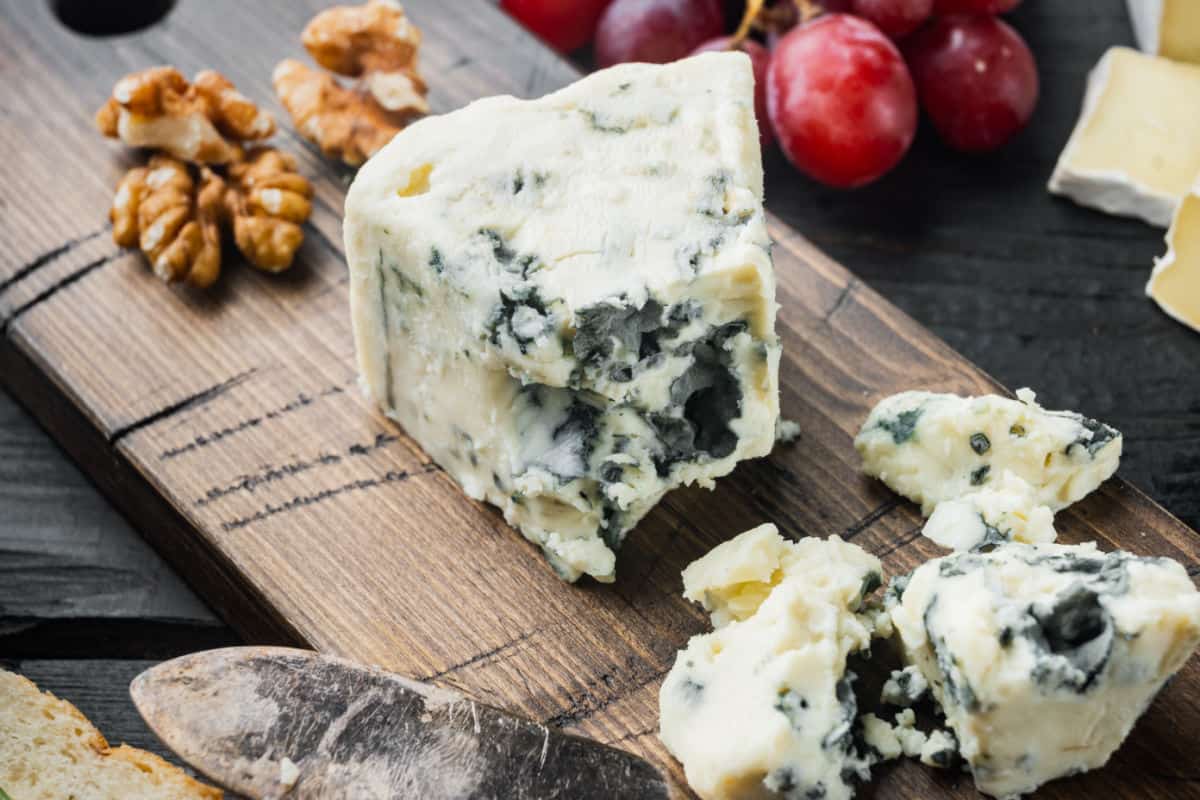
You’ll find 6 different types of blue cheese. Most blue cheeses are made with cow’s milk.
Roquefort is made with ewe’s milk, and Cambozola is made with both cow’s milk and cream.
Serve Blue Cheese slightly below room temperature (about 55-60°F or 13-16°C) to help balance the strong flavors.
Parmesan
A hard cheese with a salty, nutty flavor, Parmesan is a classic addition to a charcuterie board and pairs well with dried fruits and nuts.
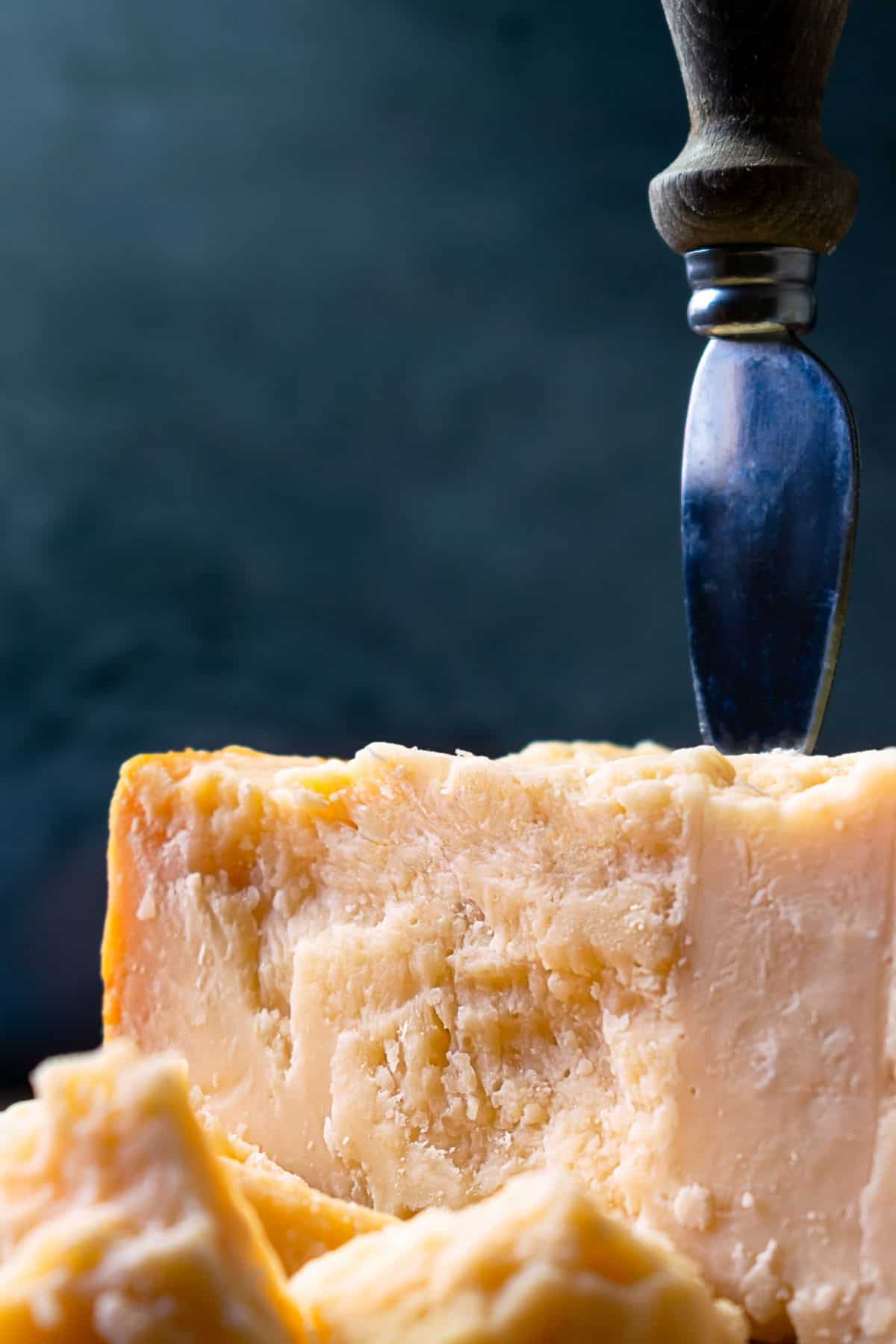
You’ll want to serve Parmesan cheese slightly below room temperature (about 55-60°F or 13-16°C) to help bring out the cheese’s nutty flavor.
Tip: Never toss that aged parmesan rind. Save it for adding umami flavor to soups like this Italian Bean Soup.
Manchego
A semi-hard cheese with a nutty, slightly sweet flavor, Manchego is a great choice for a Spanish-themed charcuterie board and pairs well with olives and chorizo.
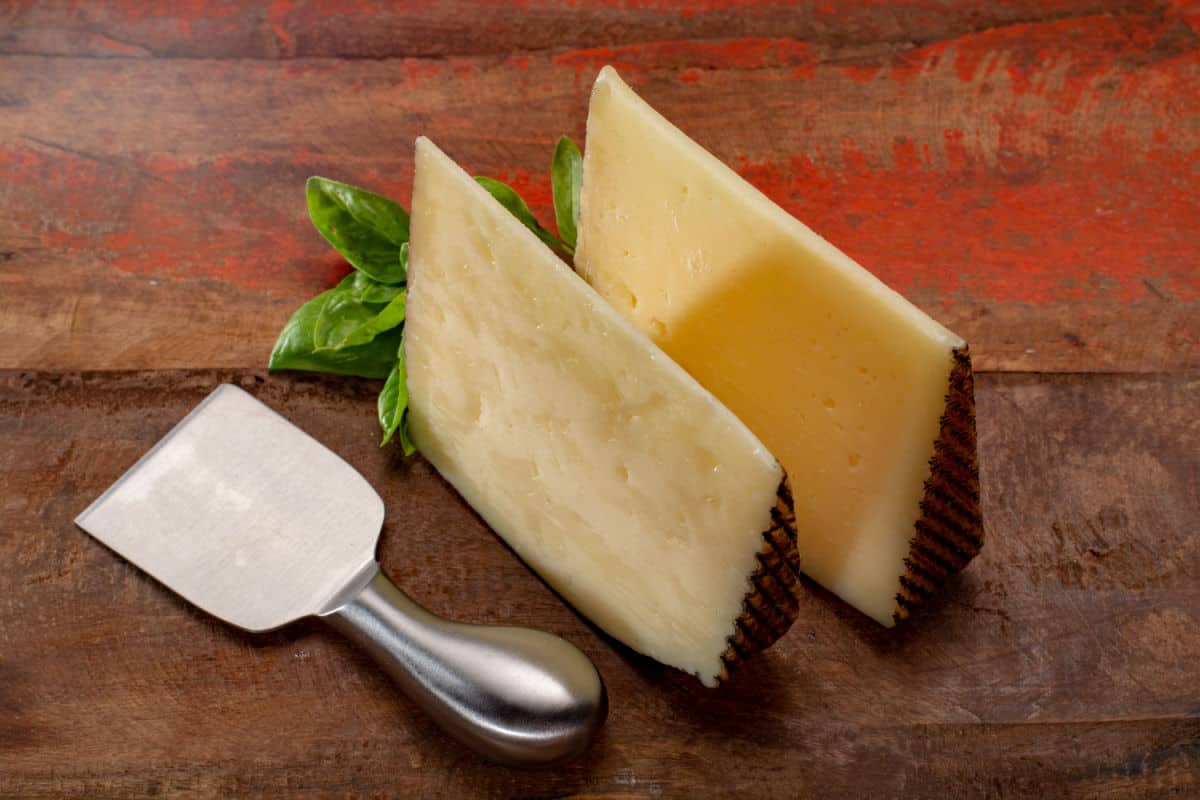
Manchego is best served at room temperature (about 68-70°F or 20-21°C) to allow the cheese to soften and release its flavors.
Camembert
A soft cheese with a creamy texture and mild flavor, Camembert is similar to Brie and pairs well with fresh fruit and nuts.
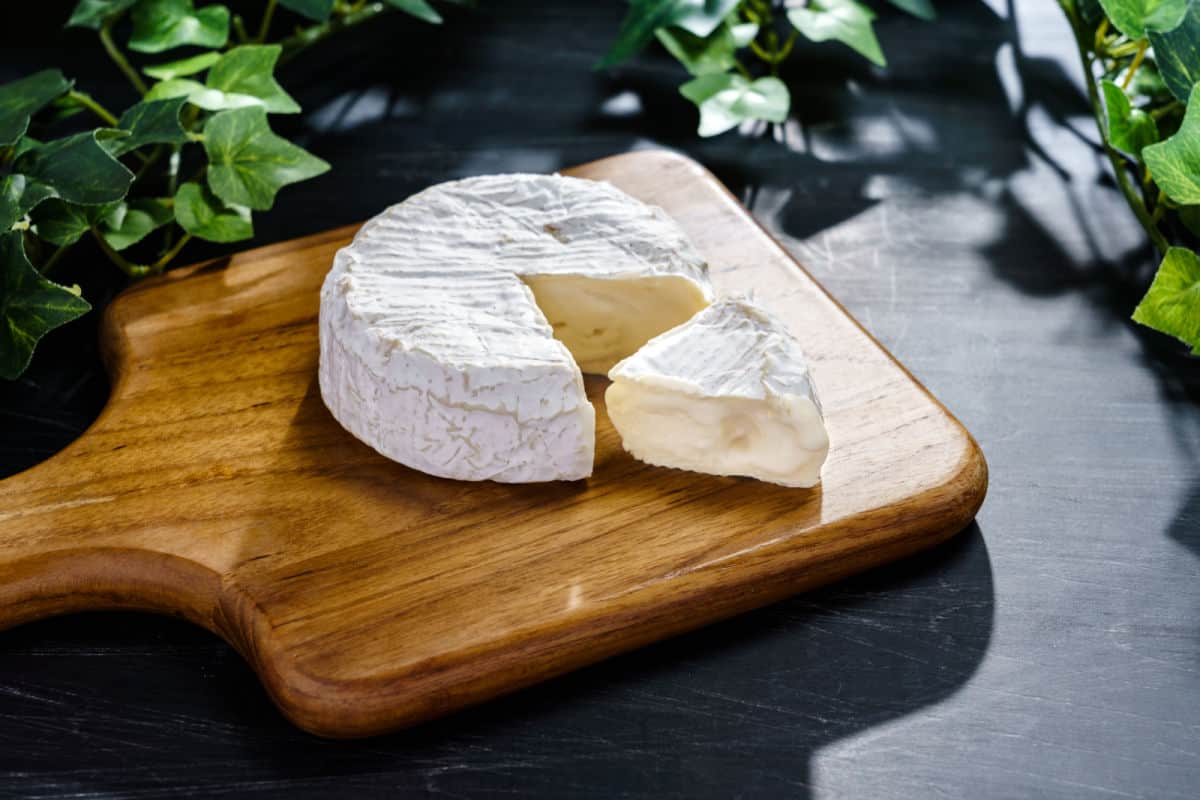
Serve Camembert at room temperature (about 68-70°F or 20-21°C) to allow the cheese to soften and the flavors to develop.
Comté
A hard cheese with a nutty, caramel-like flavor, Comté is a great choice for a French-themed charcuterie board and pairs well with pâté and dried fruits.
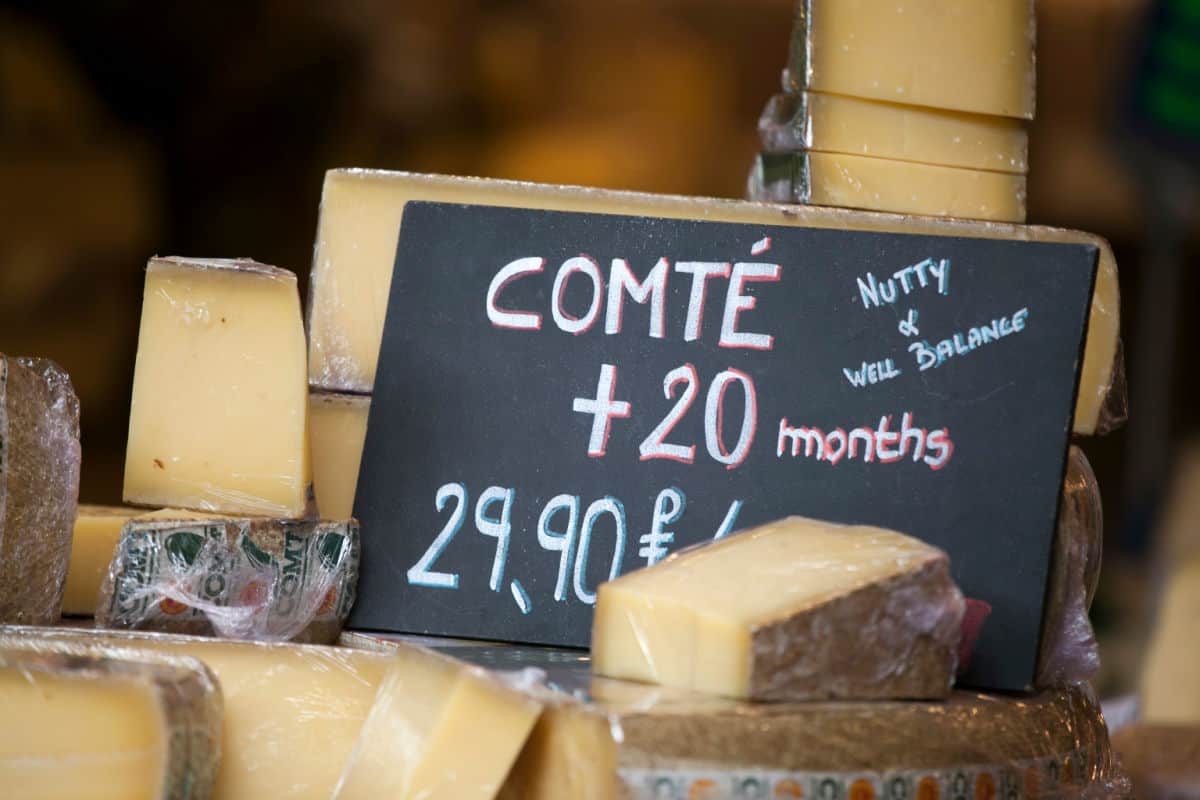
I’m heading to Comté this summer to learn more about the cheeses made there and can’t wait!
Comté cheese should be served slightly below room temperature (about 55-60°F or 13-16°C) to help bring out the cheese’s complex flavors.
Asiago
A hard cheese with a nutty, slightly sweet flavor, Asiago pairs well with cured meats and fresh fruit.
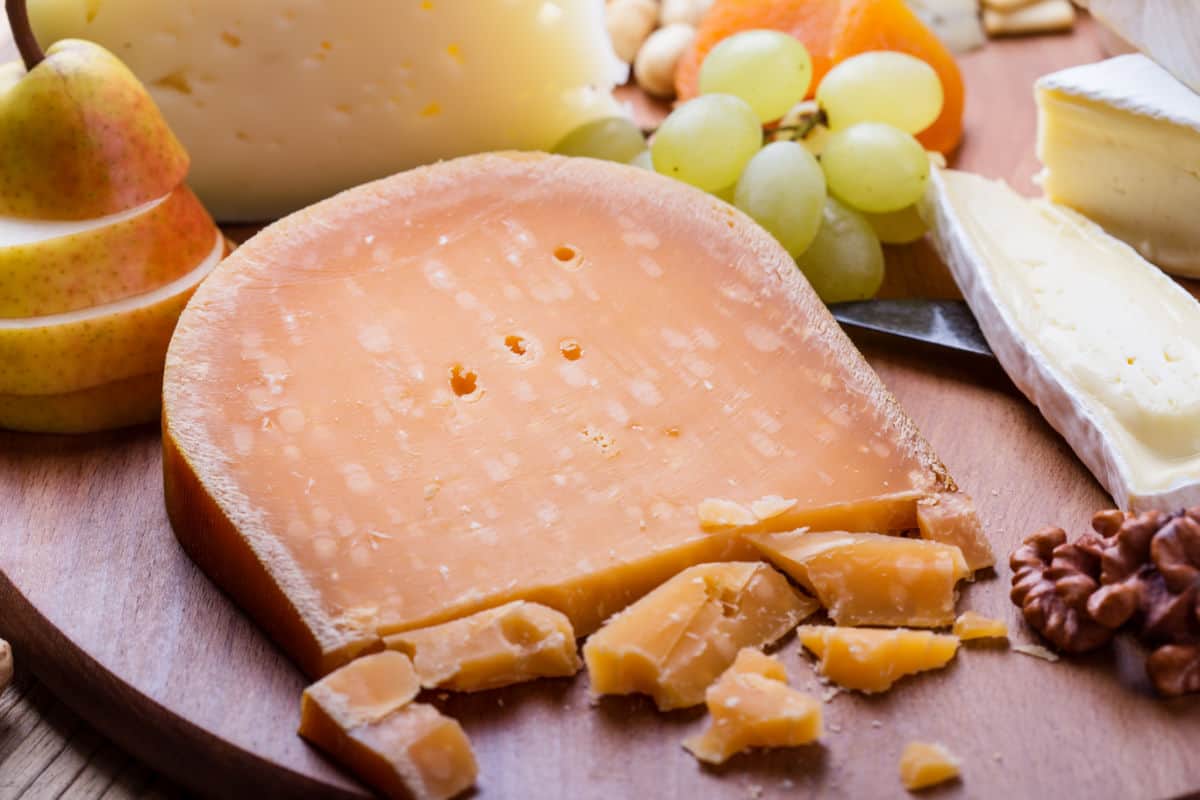
Serve at room temperature (about 68-70°F or 20-21°C) to allow the cheese to soften and release its flavors.
Experimenting with Cheese
If you’re lucky enough to have a cheese shop or specialty department of your grocery store, experiment with some different varieties to see which cheese type you like the most.
In addition, cheese pairs incredibly well with wine, like Cabernet Sauvignon or Chardonnay. I think both the cheese and wine improve when you pair them together.

Keep your eyes open for local wine tastings where you may get the opportunity to learn more about different varietals and how they pair best with cheeses.
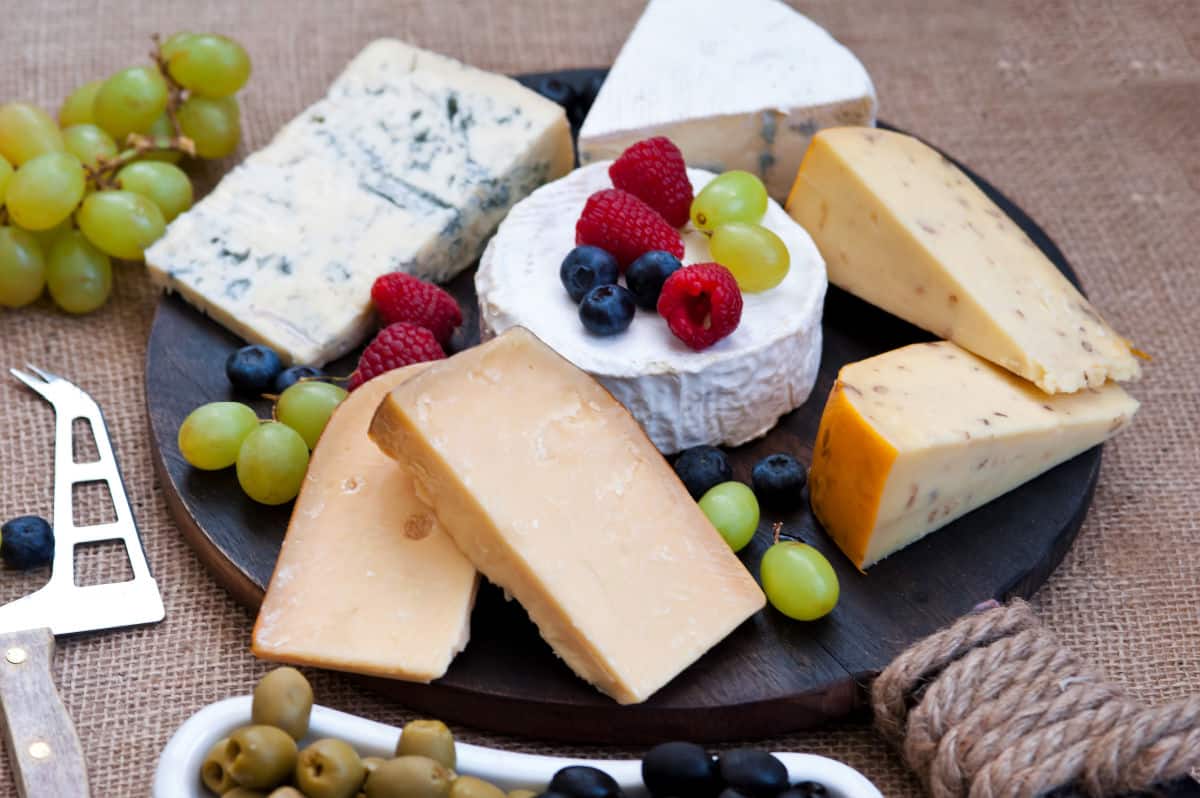
Can You Eat the Rind of Cheese?
A question many people have about cheeses is whether or not you can eat the rind, so let’s get that out of the way before we move on to cutting the cheese!
- Soft cheeses: The rind of soft cheeses like Brie and Camembert is typically edible and adds a slightly earthy flavor to the cheese. However, some people prefer to remove the rind for a milder flavor and softer texture.
- Hard cheeses: The rind of firm cheeses like Parmesan and Asiago is not usually eaten and can be quite tough and unappetizing. These cheeses are typically grated or shaved and used as an ingredient in recipes. However, don’t toss the rind of that Parmesan or Asagio! The rind adds wonderful umami flavor to soup and sauces. Be sure to remove the rind from the pot before serving.
- Semi-hard cheeses: The rind of semi-hard cheeses like Gouda and Manchego is generally edible but can be quite thick and rubbery. Some people prefer to remove the rind for a milder flavor and soft texture.
- Blue cheeses: The rind of blue cheeses like Roquefort and Stilton is not typically eaten and can be quite strong and pungent. This crumbly cheese is often used as a topping for salads and other dishes.
In general, it is absolutely safe to eat the rind of most cheeses.
Some people may find the rind unappetizing or too strong in flavor. Others may enjoy the added complexity it brings to the cheese.
If you’re not sure whether or not to eat the rind, you can always try a small piece and see how you like it!
How to Cut the Cheese for a Charcuterie Board
Start with a sharp knife and a cutting board. A dull knife will make the process more difficult and could lead to uneven slices. A sharp knife is the best way to ensure clean cuts.
Believe it or not, there are different cheese knives made for different cheeses.
This cheese knife set includes a soft cheese knife with holes in it to minimize the chances of the cheese sticking to it.
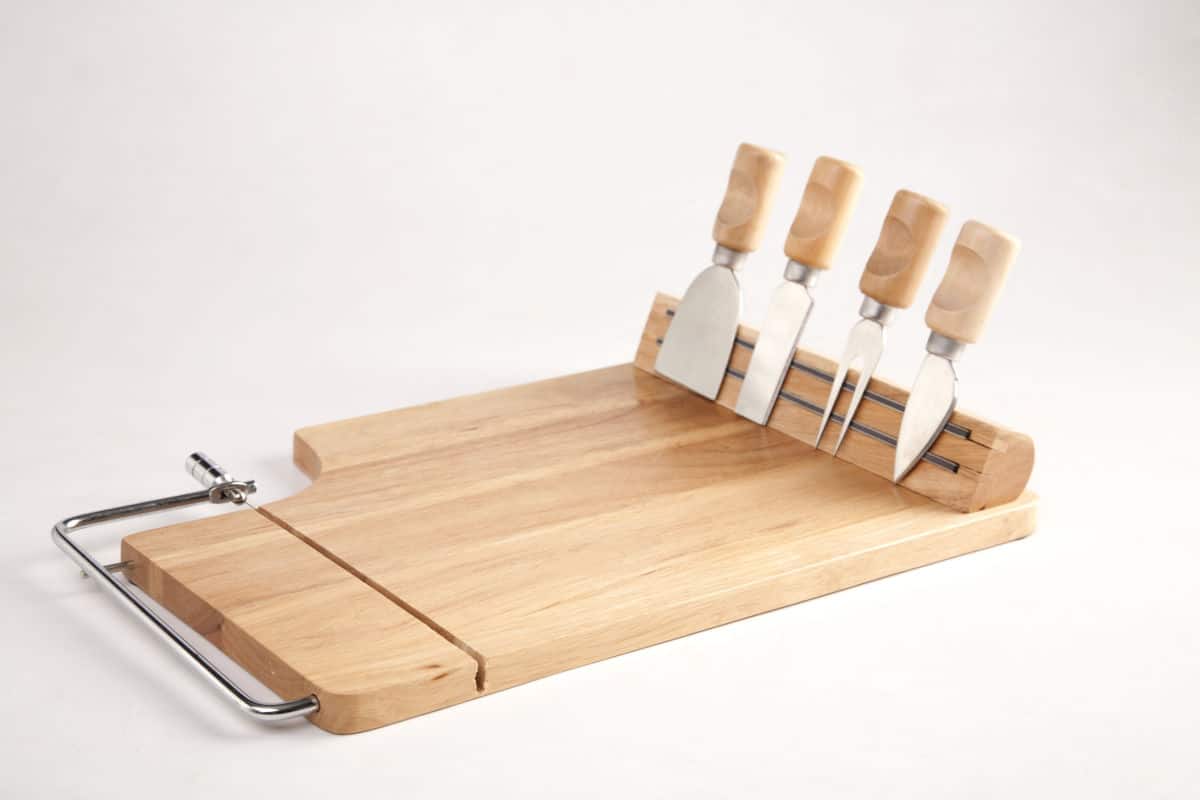
Keep the slices fairly thin as thick slices may be overwhelming. Aim for slices around 1/8 inch thick.
Slice against the grain: Look for the natural lines in the cheese and slice perpendicular to them.
This will help break up the fibers of the cheese and result in a more tender bite.
How to Arrange the Cheese on the Charcuterie Board
When placing the different cheese varieties on the cheese platter, start with the larger blocks and work your way down to the smallest.
This will help create a visual hierarchy and make it easier for guests to navigate the entire board.
Leave some space between the blocks of cheese to make it easier to cut and serve.
It’s a good idea to label each one so guests know what they’re eating. We love these small signs for labeling each type of cheese.
Arrange Gouda and other slices of cheese in a fan shape on your board.
This makes for an attractive presentation and allows guests to easily pick up a slice.
Try slicing some of the cheese into smaller pieces in advance to make it easier for guests to serve themselves. Leave some whole for a more dramatic presentation.
For a cheese and meat board, use the same strategy for arranging the items.

You can also garnish the board with fresh herbs or edible flowers for a pop of color and added visual interest.
Cheese pairs well with a variety of accompaniments, such as crackers, bread, fruit, nuts, meats, and dips. Arrange these items around the cheese to provide a balance of flavors and textures.
Finally, don’t forget to add condiments for your charcuterie board. The condiments really do take the flavors of the foods to the next level!
I think my favorites are fig jam and Marcona almonds along with a variety of fruits. You can place them in small bowls on the board for a pretty presentation.
With these tips, you’ll be able to cut and serve cheeses like a pro. Don’t be afraid to experiment with different pairings to find the perfect combination of flavors for your guests to enjoy!
Frequently Asked Questions
I think three kinds of cheese is a good number. Even with a crowd, we wouldn’t serve more than four or five.
30 minutes before guests arrive is a good time to set out the board, giving the cheese time to soften a bit.
Four hours is about how long I would leave a cheese board out at room temperature. If the cheese is out that long, I would toss the remaining cheese.
More Charcuterie Boards and Appetizers
Best Nuts for a Charcuterie Board




